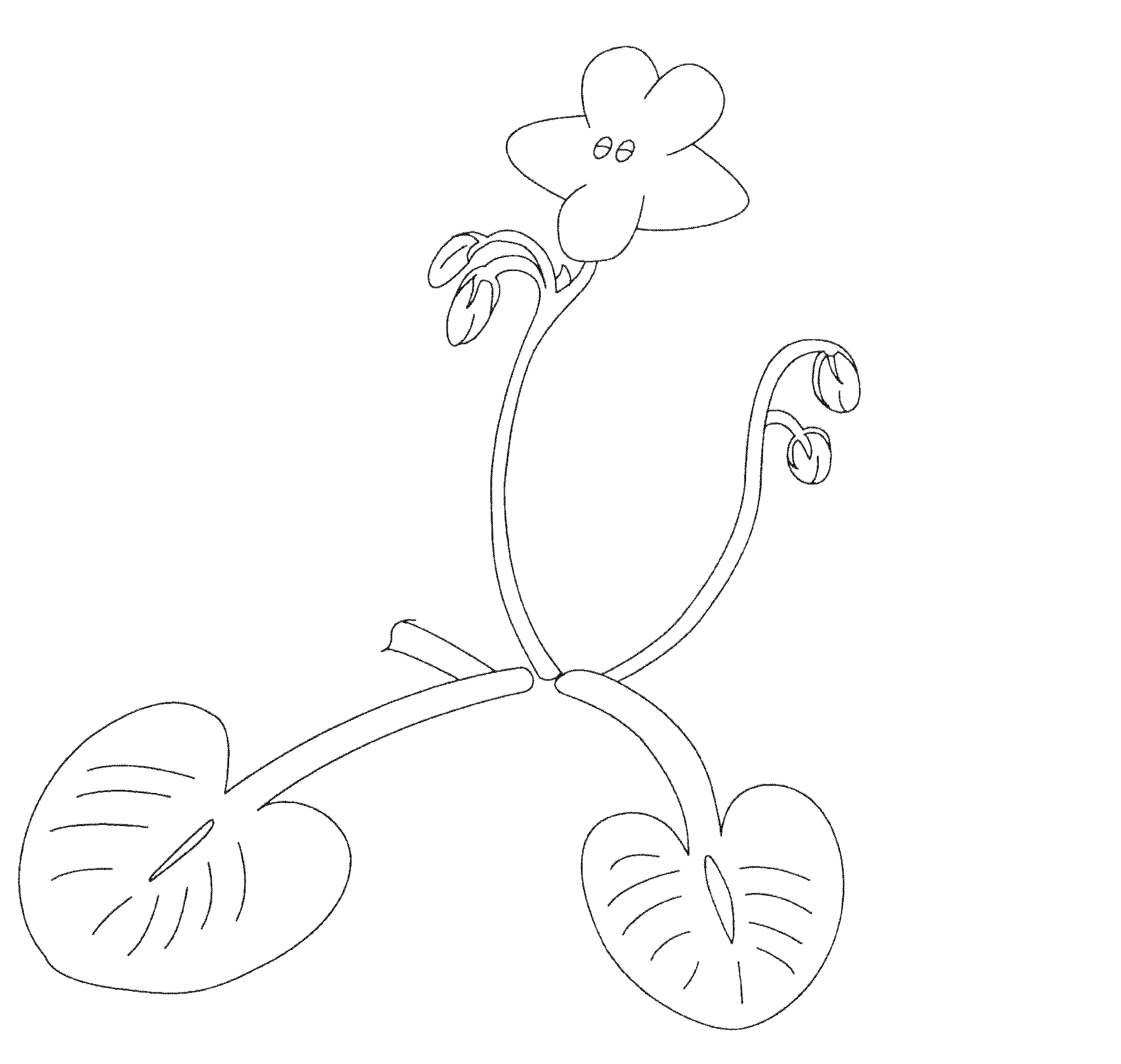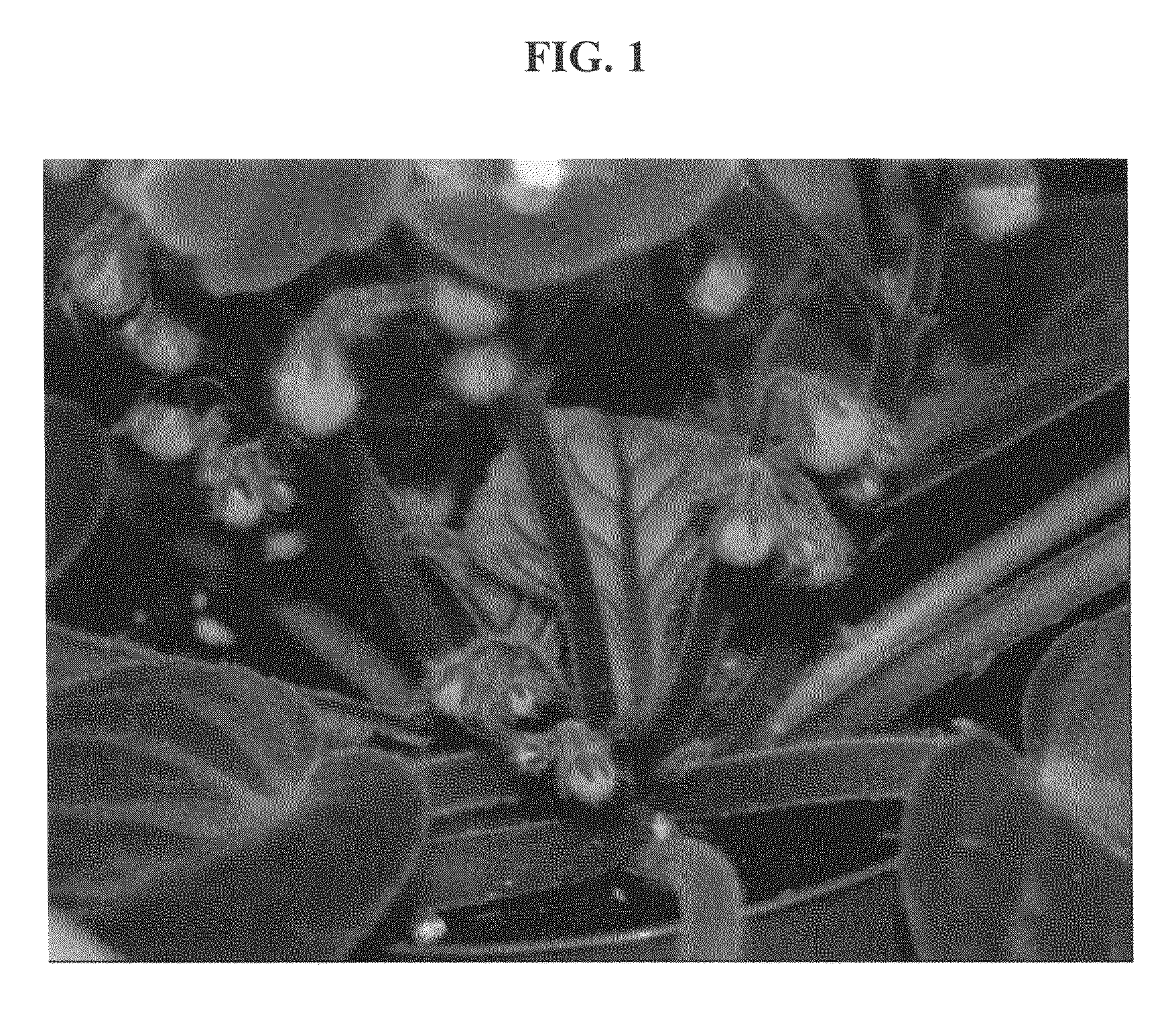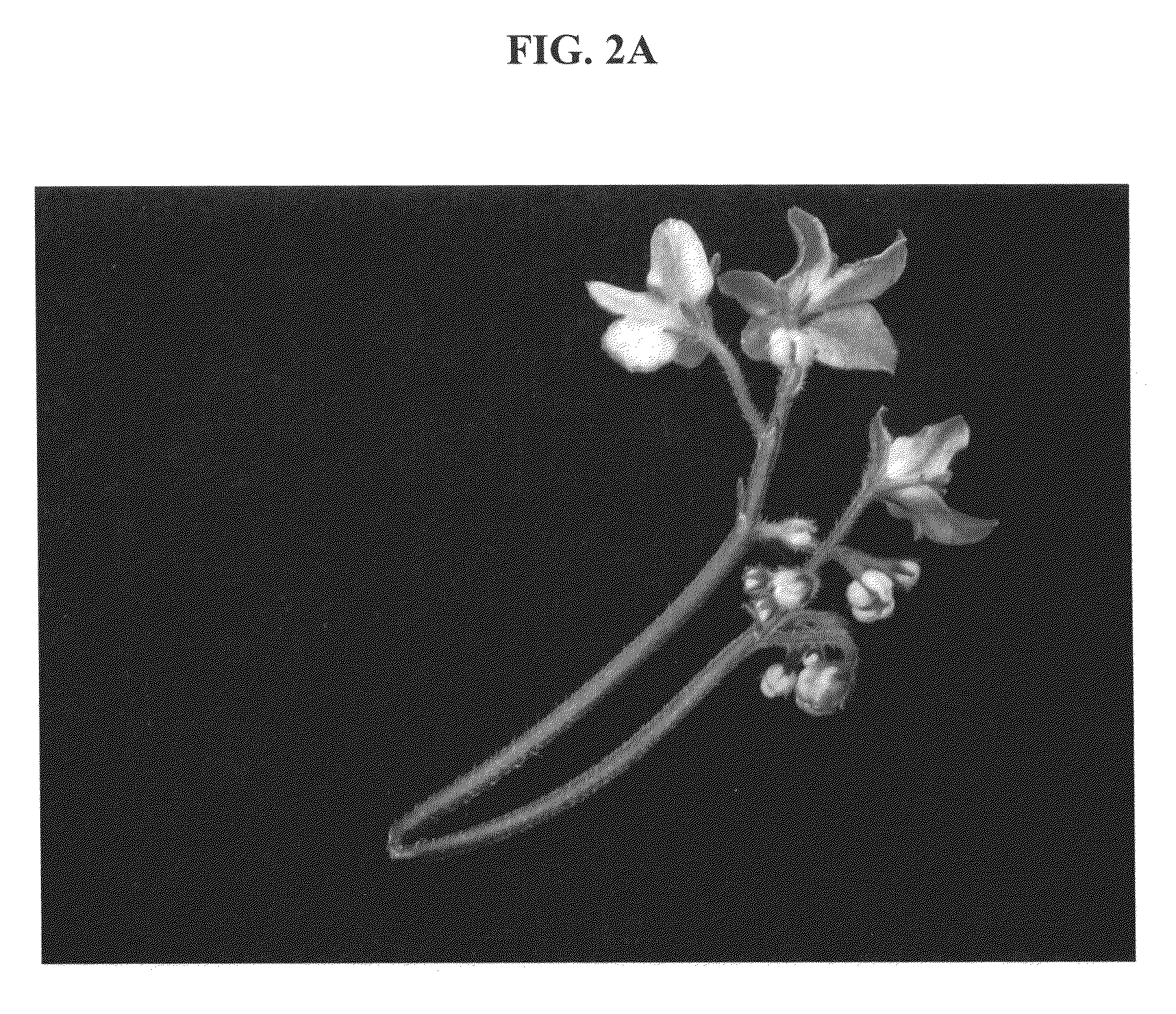Multiflorescence trait in African Violets
a multi-florescence trait and african violet technology, applied in the field of multi-florescence trait in african violets, can solve the problems of inability to produce african violet cultivars, limited profusion and duration of flowering stems on known cultivars, and loss of uniform plant habi
- Summary
- Abstract
- Description
- Claims
- Application Information
AI Technical Summary
Benefits of technology
Problems solved by technology
Method used
Image
Examples
example 1
‘SB 4-2 Muflo’
[0026]‘SB 4-2 Muflo’ was produced from the cross of selection ‘H 25 / 2’ with ‘G 68 / 1’. The African Violet seeds from the cross of cultivars ‘H 25 / 2’ and G 68 / 1′ were incubated on LDEF for six years. A mutant plant obtained from these seeds exhibited the multiflorescence trait and was designated ‘SB 4-2 Muflo’. Asexual reproduction of the new cultivar by leaf cuttings, as performed by the inventor in Nashville, Tenn., has demonstrated that the combination of characteristics as herein disclosed for the new cultivar are firmly fixed and retained through successive generations of asexual reproduction. Cuttings for asexual propagation can be taken at any time of the year and no special hormones or soil mixtures are used.
[0027]‘SB 4-2 Muflo’ has not been observed under all possible environmental conditions. The phenotype may vary significantly with variations in environment such as temperature, light intensity and day length, however, it has been determined that the multiflor...
example 2
Breeding of New Multiflorescence Cultivars
[0068]A breeding program was undertaken using ‘SB 4-2 Muflo’ as a breeding stock for the transfer of the multiflorescence trait into diverse genetic African Violet backgrounds to produce new and unique multiflorescence cultivars. This goal was accomplished by means of crossing ‘SB 4-2 Muflo’ with selected parents of the established research program. Any African Violet selection carrying the multiflorescence trait could be substituted for ‘SB 4-2 Muflo’ as parent material for this breeding program. ‘P 40 / 9’ for example, has been successfully used as breeding stock to produce new African Violet selections that exhibit the multiflorescence trait. African Violet plants are cultivated and crossed according to any methods well known to those working in this field such as the methods described in How To Select and Grow African Violets and Other Gesneriads by Theodore James, Jr (HP Books, 1983).
[0069]FIG. 4 shows the entire genealogy of the multiflo...
PUM
 Login to View More
Login to View More Abstract
Description
Claims
Application Information
 Login to View More
Login to View More - R&D
- Intellectual Property
- Life Sciences
- Materials
- Tech Scout
- Unparalleled Data Quality
- Higher Quality Content
- 60% Fewer Hallucinations
Browse by: Latest US Patents, China's latest patents, Technical Efficacy Thesaurus, Application Domain, Technology Topic, Popular Technical Reports.
© 2025 PatSnap. All rights reserved.Legal|Privacy policy|Modern Slavery Act Transparency Statement|Sitemap|About US| Contact US: help@patsnap.com



